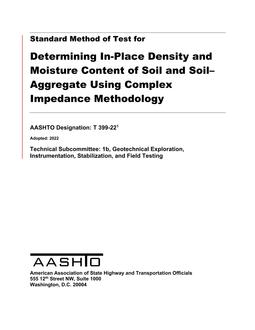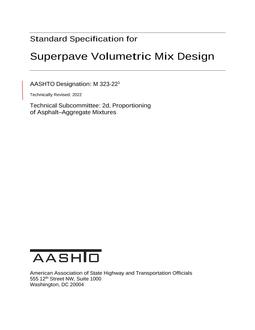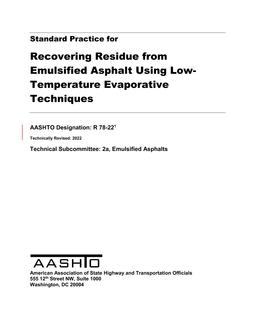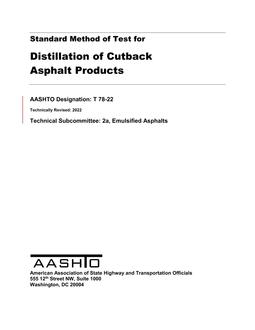
AASHTO T 399-22
This practice describes the procedures for determining the density and moisture content of aggregate and soil–aggregate. The practice allows for electromagnetic testing of porous construction materials in the laboratory that is used to calibrate the apparatus to these specific porous construction materials. With such calibration, the field apparatus can then be used on the construction site to test the density and moisture of the porous construction materials without the need for field calibration using a complex impedance measuring instrument (CIMI). The CIMI measures the electrical properties of the material being tested and correlates the electrical properties to the physical properties during a laboratory or field material calibration procedure. The electrical properties are typically unique for the material. During the material calibration procedure, empirically derived correlations relate the electrical and physical properties of the material using the correlation mathematics. The subsequent electrical testing of the material utilizes the established relationship of the electrical and physical characteristics to calculate the material density and moisture content. The CIMI is composed of solid state electronics that are calibrated at the time of manufacturing and no additional instrument is thereafter required.
Density—The total or wet density of aggregate and soil–aggregate mixtures is determined by applying a known frequency of alternating current and measuring it through the material. The complex impedance is calculated based on the measurements and relationships previously established with a known material model.
The density in mass per unit volume is determined by comparison of the readings calculated and the calibration with a representative material model over a range of known densities.
Moisture—The moisture content of the aggregate and soil–aggregate mixtures is determined by applying a known frequency of alternating current and measuring it through the material. The complex impedance is calculated based on the measurements and relationships previously established with a known material model.
The moisture content in mass per unit volume is determined by comparison of the readings calculated and the calibration with a representative model of known moisture content.
This standard was formerly designated as provisional method of test TP 112.
Product Details
- Published:
- 2022
- Number of Pages:
- 11
- File Size:
- 1 file , 1.1 MB
- Note:
- This product is unavailable in Ukraine, Russia, Belarus


